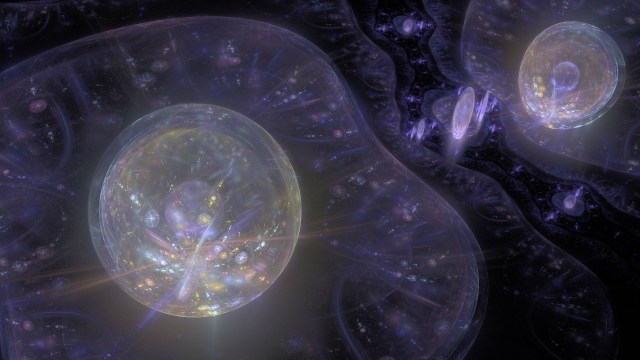Big Bang confirmed again; this time by the Universe’s first atoms

If the expanding Universe and the cosmic microwave background didn’t convince you, this intricate, spectacular prediction should.
“In the current cosmological model, only the three lightest elements were created in the first few minutes after the Big Bang; all other elements were produced later in stars.” –Fumagalli, O’Meara and Prochaska, 2011
The Big Bang is the leading theory as to where our Universe came from. The Universe was hotter, denser, more uniform, and smaller in the past, and is only as vast as it is today due to the fabric of expanding space. This idea was extremely controversial for many decades, until detailed observations of the leftover glow from that hot, early fireball was discovered and measured, in extraordinary agreement with the Big Bang’s predictions. But there’s another prediction the theory made: that in the Universe’s first few minutes, precise amounts of hydrogen, deuterium, helium, and lithium would be created. Those predicted ratios are fixed by physics and non-negotiable, but difficult to measure. Thanks to new observations, both the helium and deuterium ratios are now measured, confirming the Big Bang once again.
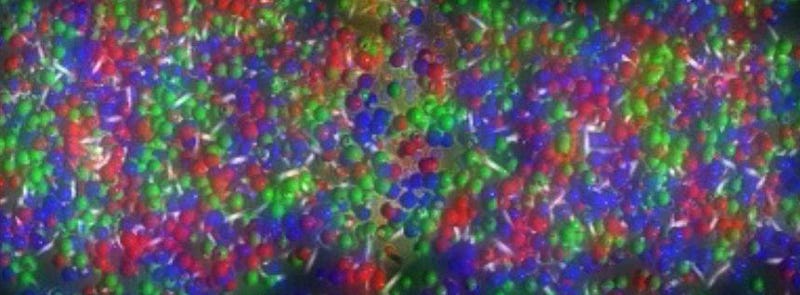
Here’s where these elements came from. In the earliest stages of the Universe, there was matter, antimatter, and radiation, all flying around and colliding at extraordinarily high energies. As the Universe aged, it expanded and cooled, and the matter and antimatter began to annihilate away faster than new pairs of particles and antiparticles could be created. The leftover matter included protons, neutrons, electrons, and neutrinos, which could undergo reactions thanks to the weak nuclear force. In particular, protons and neutrons could convert into one another: a proton plus an electron would give rise to a neutron and a neutrino, and vice versa. But neutrons are heavier than protons and electrons combined, so as the Universe cooled, we wound up with more protons than neutrons.
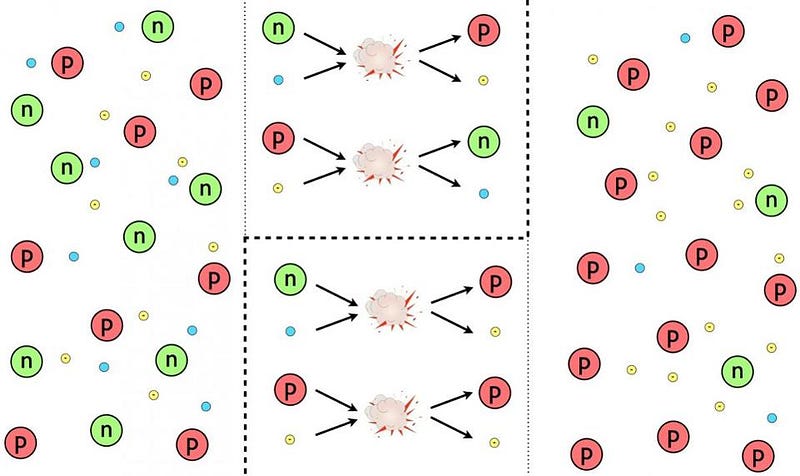
At this point, the Universe would have loved to form heavier elements through fusion, but any composite nuclei that were formed immediately get blasted apart by all the radiation around them. The Universe needs to cool — and the radiation needs to lose enough energy — in order for these nuclei to become stable. The first nucleus you can form is deuterium: made of a proton and a neutron. But deuterium is fragile, and it takes more than three minutes for the first deuterium to stably form in the Big Bang. During this time, the free neutrons, which are unstable, have no choice but to decay. By time you can form deuterium, the Universe is about 87–88% protons and only 12–13% neutrons.
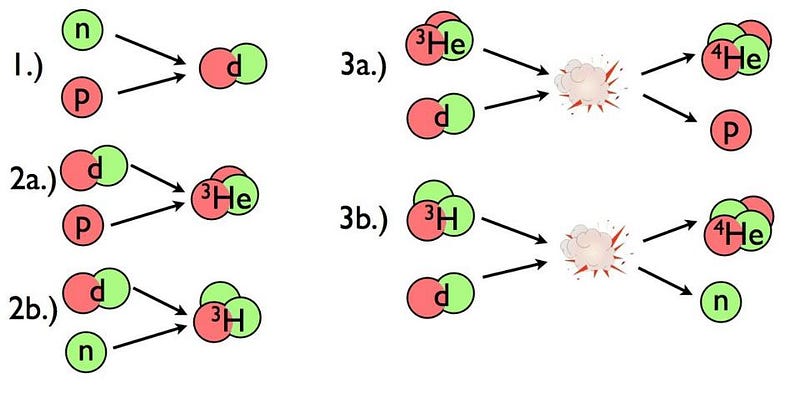
But once you’re cool enough to do that, a chain reaction occurs. Almost all of the neutrons go into making helium-4: a nucleus with two neutrons and two protons. A small amount — a few thousandths of a percent — remains in the form of deuterium (hydrogen-2) and helium-3, along with a few millionths of a percent in lithium. The predictions are dependent on only one parameter: the ratio of photons to nucleons (protons plus neutrons) in the Universe. That parameter was accurately measured in the early 2000s by WMAP, and fixes the ratios of hydrogen to all these other elements and isotopes.

So then, the question became all about measuring these quantities in the Universe. The hard part is finding these atoms in their original pristine state: gas that has never been exposed to star-forming regions. This is notoriously hard, due to the fact that the only way we can observe which type of atoms we have is when they emit or absorb light… which is something we need stars for!
So we have to get lucky. We need neutral, pristine atoms to exist in between ourselves and a distant light source, like a bright, young galaxy or a quasar. This may be rare, but the Universe is a big place. Given enough chances, sometimes we get lucky.

Helium is pretty easy to measure, but problematic because it’s so insensitive. Sure, we know that the Universe, from observations, has between 23.8% and 24.8% helium in the earliest stages, but that doesn’t help all that much; the errors are big compared to the differing theoretical predictions of different ratios. But deuterium is not only sensitive, it’s finally been measured well! The first big break for deuterium came in 2011, when the team of Michele Fumagalli, John M. O’Meara, and J. Xavier Prochaska discovered two samples of pristine gas from 12 billion years in the past, lined up with with quasars. What they found was spectacular: within the errors of measurement, the predictions and observations agreed.
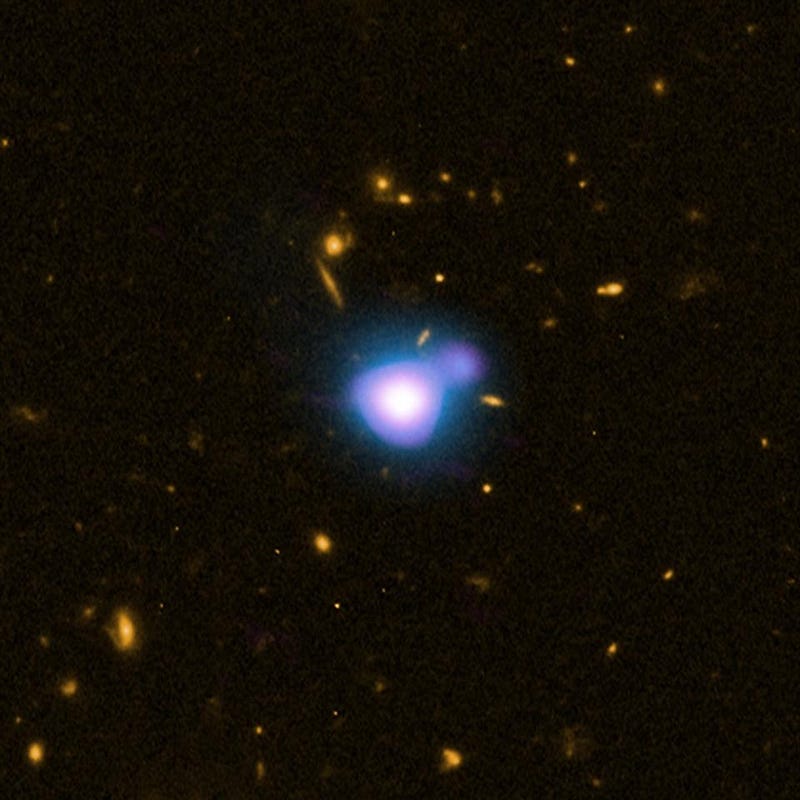
But more data has just come in! Two new measurements, in a paper just coming out now by Signe Riemer-Sørensen and Espen Sem Jenssen, of different gas clouds lines up with a different quasar have given us our best determination of deuterium’s abundance right after the Big Bang: 0.00255%. This is to be compared with the theoretical prediction from the Big Bang: 0.00246%, with an uncertainty of ±0.00006%. To within the errors, the agreement is spectacular. In fact, if you sum up all the data from deuterium measurements taken in this fashion, the agreement is indisputable.
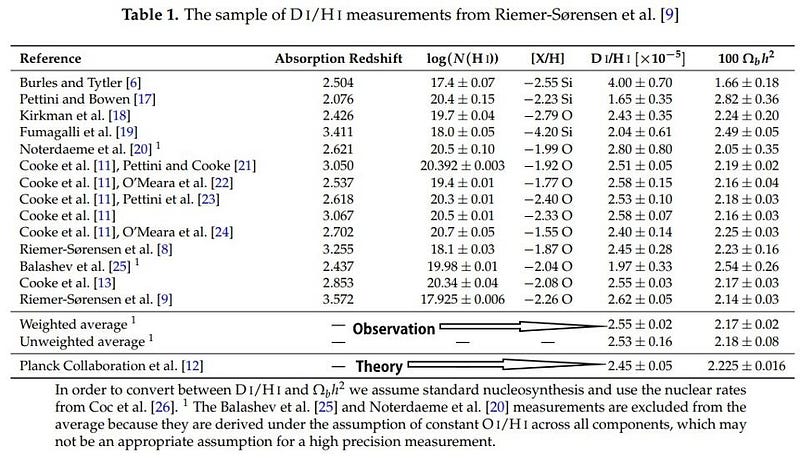
If anything could throw the Big Bang into crisis, it would be if a truly pristine sample of gas disagreed with the predictions of how the elements should turn out. But everything lines up so incredibly well, between the theory of what we should observe just three-to-four minutes after the Big Bang and the observations we make billions of years later, that it can only be considered a remarkable confirmation of the most successful theory of the Universe ever. From the smallest, subatomic particles to the largest cosmic scales and structures, the Big Bang explains an enormous suite of phenomena that no other alternative can touch. If you ever want to replace the Big Bang, you’re going to have to explain some tremendously disparate observations, from the cosmic microwave background to Hubble expansion to the first atoms in the Universe. The Big Bang is the only theory that can get us all three, and now it’s gotten them to greater precision than ever before.
Ethan Siegel is the author of Beyond the Galaxy and Treknology. You can pre-order his third book, currently in development: the Encyclopaedia Cosmologica.





